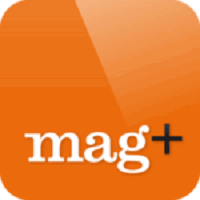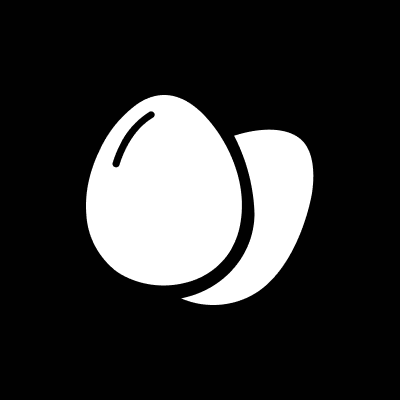Description

Bouquet

Mag+ Application Development
Comprehensive Overview: Bouquet vs Mag+ Application Development
Bouquet and Mag+ Application Development are two platforms aimed at creators and businesses looking to develop digital content, but they cater to slightly different needs and have different strengths. Here's a comprehensive overview of both:
A) Primary Functions and Target Markets
Bouquet
Primary Functions:
- Bouquet is a digital content creation platform focused on building interactive and immersive experiences. It typically supports a variety of multimedia content, allowing users to create presentations, reports, and applications with integrated audio, video, and graphics.
- The platform emphasizes ease of use and flexibility, often providing templates and intuitive design tools for non-developers.
Target Markets:
- Education (for creating interactive learning materials).
- Corporate sectors (for presentations and reports).
- Marketing and advertising agencies (for digital brochures and engaging promotions).
Mag+
Primary Functions:
- Mag+ is a digital publishing platform aimed at simplifying the creation of mobile apps and digital publications. It allows users to build magazine-like applications optimized for tablets and smartphones.
- It includes features like interactive overlays, embedded media, and responsive designs, tailored for use on digital devices.
Target Markets:
- Magazine and book publishers transitioning to digital formats.
- Businesses and brands looking to create custom apps for marketing or client communication.
- Designers and creative professionals looking to distribute visually rich, interactive content.
B) Market Share and User Base
Bouquet:
- Bouquet tends to have a niche user base, mainly occupying sectors where bespoke interactive content is needed. Its market share is generally associated with education and small to midsize businesses that value creativity and interactivity in presentations and reports.
- It's known for having a growing user community, particularly among those who value user-friendly design with moderate customization needs.
Mag+:
- Mag+ possesses a more defined market share within digital publishing, particularly among magazine publishers and media houses. Its user base is composed largely of professionals engaged in digital content production for consumer-focused applications.
- The platform has a strong presence in industries moving from traditional print media to digital, notably in magazine publishing but stretching into other creative digital fields as well.
C) Key Differentiating Factors
Usability and Design:
- Bouquet emphasizes ease of use with a focus on interactive presentations and experiences, making it accessible for users without extensive technical skills.
- Mag+ provides more specialized tools for digital publishing, catering to a design-heavy and interactive user experience on mobile devices.
Customization and Flexibility:
- Bouquet offers flexibility in terms of multimedia tools and is suitable for environments where creative autonomy is a priority, often with scalable options for different content types.
- Mag+ leans towards standardization in digital publishing, ensuring high-quality outputs optimized for tablets and smartphones, usually preferred by professionals aiming for a magazine-style layout.
Market Maturity:
- Bouquet is newer and more aligned with dynamic, interactive content spaces, creating a growing niche for itself among businesses seeking innovative content solutions.
- Mag+ has more experience and establishment in publishing, offering depth in functionality particularly tuned to the needs of magazine and book publishers transitioning to digital formats.
In summary, while Bouquet targets a more diverse range of industries with a focus on interactive and multimedia-rich content, Mag+ is more focused on the digital publishing sector, catering predominantly to businesses and professionals transitioning from print to digital publications. Each platform has adapted to meet the demands of their respective target markets with unique strengths in usability, customization, and specialization.
Contact Info

Year founded :
1947
Not Available
Not Available
France
Not Available

Year founded :
Not Available
Not Available
Not Available
Not Available
Not Available
Feature Similarity Breakdown: Bouquet, Mag+ Application Development
To provide an accurate feature similarity breakdown between Bouquet and Mag+ Application Development, it's important to highlight the contexts in which these products are used. Bouquet generally refers to a software tool for business intelligence and data visualization, while Mag+ is a platform designed for creating and distributing digital content, especially for mobile applications and digital magazines. Given this context, here's a comparative analysis:
a) Core Features in Common
-
Content Creation and Management:
- Both platforms support creating and managing digital content. In Bouquet, this could be data visualizations and dashboards, while in Mag+, this would be digital magazines or mobile app content.
-
User Engagement:
- Both tools are designed to enhance the end-user experience either through interactive data representation in Bouquet or immersive digital publications in Mag+.
-
Customization:
- Both platforms offer tools for customization. Bouquet allows users to customize dashboards and reports, whereas Mag+ offers customizable templates and design options for digital publications.
-
Distribution and Sharing:
- Both enable content distribution. Bouquet facilitates sharing insights through dashboards, while Mag+ allows publishing content to various mobile and tablet platforms.
b) User Interface Comparison
- Bouquet:
- The user interface is typically data-centric with a focus on clarity, organization, and interactivity. It might feature dashboards, data panels, drag-and-drop functionalities, and real-time data visualization tools.
- Mag+:
- The interface is design-driven, focusing on media-rich content creation. Users can expect layouts that support multimedia integration, interactive elements, and a WYSIWYG (What You See Is What You Get) editor that allows for precise content placement.
c) Unique Features
- Bouquet:
- Data Integration: Bouquet specializes in integrating various data sources, providing robust tools for data connection and transformation.
- API Connectivity: Offers strong support for different APIs to fetch and manipulate data, making it easy for developers to build customized connectors.
- Mag+:
- Touch-Interface Optimization: Specifically designed for creating content that takes advantage of touch gesture capabilities on mobile devices.
- Rich Media Support: Offers extensive support for integrating video, audio, and interactive media, going beyond static content presentations.
- Instant Publishing: Features tools for rapid deployment of content across multiple devices in real time, which can be crucial for time-sensitive publications.
In summary, while Bouquet and Mag+ share certain features related to content creation and user engagement, they cater to different user needs and applications. Bouquet is more focused on data and business intelligence solutions, while Mag+ prioritizes digital publishing and media-rich application development. These distinct focus areas naturally mean that each platform possesses unique features tailored to its primary audience.
Features

Not Available

Not Available
Best Fit Use Cases: Bouquet, Mag+ Application Development
Bouquet and Mag+ Application Development are tools that serve different needs and are suitable for various types of projects or businesses. Here's a breakdown of the best fit use cases for each:
Bouquet
a) For what types of businesses or projects is Bouquet the best choice?
- Data-Driven Organizations: Bouquet is an excellent choice for businesses that rely heavily on data and require advanced data visualization solutions. It provides powerful tools for building custom dashboards and reports.
- Business Intelligence Projects: It is ideal for companies aiming to enhance their business intelligence capabilities, offering interactive and intuitive visualizations of complex data sets.
- Enterprises with Complex Data Needs: Large corporations or enterprises with multiple data sources looking for a cohesive data visualization layer would find Bouquet beneficial.
- Tech-Savvy Teams: Because Bouquet may require some level of technical expertise for optimal use, organizations with skilled IT teams can leverage its capabilities effectively.
b) In what scenarios would Mag+ Application Development be the preferred option?
- Content-Heavy Publishers: Mag+ is particularly suited for publishers such as magazines, newspapers, and digital content providers looking to transition their materials into engaging digital formats.
- Marketing and Branding Projects: Companies focused on marketing and branding can use Mag+ to create interactive brochures, catalogs, and promotional materials that stand out.
- Educational Institutions: It is also a great choice for educational content creation, allowing the development of interactive e-books and learning materials.
- Creative Agencies: Agencies that develop content for clients in industries such as fashion, travel, or lifestyle can benefit from Mag+ to create visually rich applications.
d) How do these products cater to different industry verticals or company sizes?
-
Industry Verticals:
- Bouquet caters to industries like finance, healthcare, and retail that need in-depth data analytics and visualization capabilities. It supports verticals that generate and analyze large data sets to drive decision-making.
- Mag+, on the other hand, is more suitable for media, publishing, and education sectors that require high-quality digital publishing solutions.
-
Company Sizes:
- Bouquet is a better fit for medium to large enterprises that have substantial data operations and need scalable BI tools. Small businesses might find it more than necessary unless they have specific advanced data visualization needs.
- Mag+ can be efficiently used by both small and large companies but is especially valuable for those who need to produce rich, interactive digital content. Small businesses might use it for niche digital content offerings, while larger corporations could leverage it for comprehensive digital transformation in content delivery.
In summary, Bouquet shines in environments where data analysis and visualization are paramount, catering mainly to larger, data-centric organizations. Mag+ thrives in content-rich scenarios where interactive multimedia presentations are crucial, appealing across sizes but most impactful in media-focused or creative industries.
Pricing

Pricing Not Available

Pricing Not Available
Metrics History
Metrics History
Comparing undefined across companies
Conclusion & Final Verdict: Bouquet vs Mag+ Application Development
To provide a conclusion and final verdict on Bouquet and Mag+ Application Development, let's evaluate each aspect:
a) Best Overall Value
Mag+ Application Development tends to offer the best overall value for most users, especially for those involved in digital publishing on tablets and mobile devices. Mag+ provides an intuitive design workflow, which is a significant asset for those looking to quickly and easily create and distribute rich media content. Its feature set is robust and geared towards digital magazine publications, making it a top choice for publishers.
Bouquet, on the other hand, is more suited for data visualization and business intelligence applications. While it offers great value in its domain, for those specifically looking at application development similar to what Mag+ offers, it might not provide the same direct benefits.
b) Pros and Cons
Mag+ Application Development:
-
Pros:
- Specialized features for digital publishing and magazine creation.
- Easy-to-use interface tailored for designers.
- Good integration with various content management systems.
- Extensive support for interactive and multimedia content.
-
Cons:
- May not fit projects outside of digital publication effectively.
- Subscription costs can add up for smaller publishers.
- Limited if the project needs custom applications not related to publishing.
Bouquet:
-
Pros:
- Excellent for business intelligence applications.
- Strong visualization capabilities.
- Good for projects involving data analytics and dashboard creation.
- Open-source, which provides flexibility and cost-effectiveness for development.
-
Cons:
- Steeper learning curve for those unfamiliar with BI tools.
- Not designed specifically for digital content publishing.
- May require additional tools or platforms to match Mag+'s functionalities in publishing.
c) Recommendations
For users deciding between Bouquet and Mag+ Application Development, consider the following:
-
If your primary goal is developing and publishing digital magazines or engaging content on mobile devices, Mag+ is likely the better option, given its focus and strengths in this area.
-
If your needs align more with data analysis, reporting, and visualization, then Bouquet will serve better, especially if your team can handle or make use of its open-source nature for customization.
-
Evaluate the scale of your operation; Mag+ might be more suitable for small to medium publishers focused on content creation, while Bouquet might appeal to organizations needing extensive data handling capabilities.
-
Experiment with trial versions (if available) of both platforms to determine which interface and workflow best suit your team’s capabilities and project requirements.
In conclusion, the decision heavily relies on the specific needs and goals of the project. For digital publishing applications, Mag+ provides more aligned features and value, while Bouquet excels in data visualization and business intelligence settings.
Add to compare
Add similar companies



